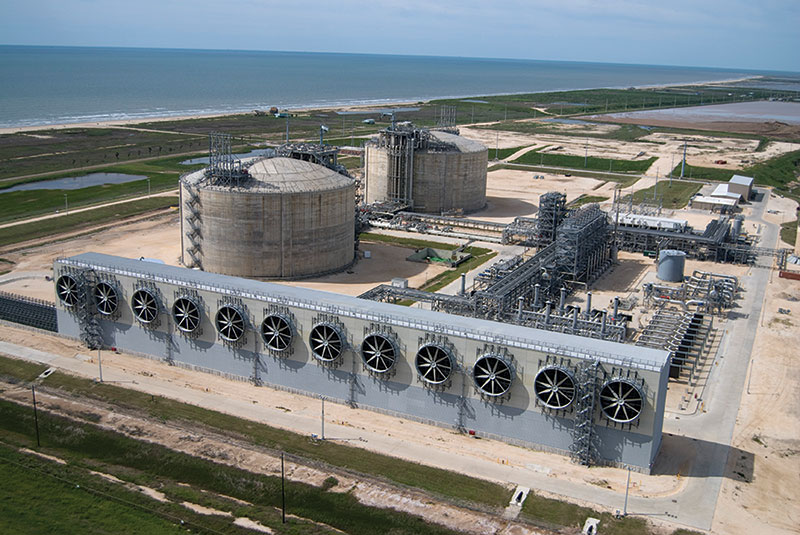Freeport LNG Resumes Natural Gas Imports Post-Hurricane Beryl
(Reuters) — U.S. liquefied natural gas (LNG) export company Freeport LNG's export plant in Texas was on track to pull in more natural gas on Tuesday after shutting on July 7 before Hurricane Beryl hit the Texas coast, according to data from financial firm LSEG.
Freeport is one of the most-watched U.S. LNG export plants in the world because it has a history of swaying global gas prices when it shuts.
On Monday, U.S. gas futures NGc1 dropped about 7% to a 10-week low after it became clear to the market that Freeport would likely continue to operate at less than full power for several more days.
Freeport said on Monday that it would restart one of the plant's three liquefaction trains this week and the other two shortly after repairing damage sustained in the hurricane.
That is a later return to full power than many market watchers were expecting. Energy traders said U.S. gas demand and prices would remain reduced until all of the trains at Freeport return to service.
The amount of gas flowing to Freeport was on track to reach about 0.4 billion cubic feet per day (Bcf/d) on Tuesday, up from near zero from July 7-15, according to LSEG data. Beryl hit the Texas coast on July 8. Officials at Freeport had no comment on the latest expected increase in feedgas.
In the week before Freeport shut, the 2.1-Bcf/d plant was pulling in an average of 1.7 Bcf/d of gas, according to LSEG data. But with Freeport starting to take in more gas, feedgas to the seven big U.S. LNG export plants, including Freeport, was on track to rise to a 10-day high of 11.5 Bcf/d on Tuesday, up from 11.2 Bcf/d on Monday and an average of 11.3 Bcf/d over the prior seven days.
Freeport is the nation's third-biggest LNG export plant behind Cheniere Energy's LNG.N 4.5-Bcf/d Sabine Pass in Louisiana and 2.4-Bcf/d Corpus Christi in Texas. Each of Freeport's three liquefaction trains can turn about 0.7 Bcf/d of gas into LNG. One billion cubic feet is enough gas to supply about five million U.S. homes for a day.
Related News
Related News

- Kinder Morgan Proposes 290-Mile Gas Pipeline Expansion Spanning Three States
- Enbridge Plans 86-Mile Pipeline Expansion, Bringing 850 Workers to Northern B.C.
- Intensity, Rainbow Energy to Build 344-Mile Gas Pipeline Across North Dakota
- U.S. Moves to Block Enterprise Products’ Exports to China Over Security Risk
- Court Ruling Allows MVP’s $500 Million Southgate Pipeline Extension to Proceed
- U.S. Pipeline Expansion to Add 99 Bcf/d, Mostly for LNG Export, Report Finds
- A Systematic Approach To Ensuring Pipeline Integrity
- 275-Mile Texas-to-Oklahoma Gas Pipeline Enters Open Season
- LNG Canada Start-Up Fails to Lift Gas Prices Amid Supply Glut
- TC Energy’s North Baja Pipeline Expansion Brings Mexico Closer to LNG Exports





Comments